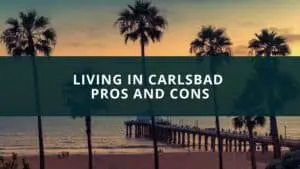El Monte is a city located in the San Gabriel Valley of Los Angeles County, California, United States. The city is the home of the El Monte Airport. The city’s slogan is “Welcome to Friendly El Monte” and historically was known as “The End of the Santa Fe Trail”. As of the 2010 census, the city had a population of 113,475.
Quick navigation
1. North El Monte
North El Monte is a small city located in the San Gabriel Valley region of Los Angeles County, California. The city is bordered by the cities of South El Monte, Baldwin Park, and Irwindale. North El Monte is home to a diverse population of approximately 11,000 residents. The city is served by the El Monte Union High School District and the Mountain View School District. North El Monte is a vibrant community with a variety of parks, recreation facilities, and businesses. The city is also home to the El Monte Airport, which is a general aviation facility.
2. South El Monte
South El Monte is a city located in the San Gabriel Valley region of Los Angeles County, California, United States. The city is situated about 10 miles (16 km) southeast of downtown Los Angeles.
As of the 2010 census, the city had a population of 20,116, down from 21,144 at the 2000 census.
South El Monte is part of the Gateway Cities region of Los Angeles County. The city’s motto is “The Pride of the Valley”, and it is often nicknamed “The Little Athens of the West”.
The area was originally settled by Spanish and Mexican colonists in the late 18th century. It was later annexed by the City of Los Angeles in 1898.
The city is home to a number of industrial and commercial businesses, as well as a diverse population. The economy is driven by manufacturing, retail, and transportation.
The city is served by the El Monte Transit Center, which provides bus and rail service to the surrounding region.
South El Monte is a friendly, family-oriented community that takes pride in its small-town feel. The city is known for its annual Cherry Blossom Festival, which celebrates the city’s Japanese-American heritage.
The city is also home to a number of parks and recreation facilities, as well as a public library.
South El Monte is an attractive community for families and businesses alike. The city offers a high quality of life and a variety of amenities and services.
3. West El Monte
West El Monte is a small city located in Los Angeles County, California. The city is home to a little over 11,000 residents and is part of the Gateway Cities region.
West El Monte is a culturally diverse community with a strong Hispanic influence. The city is home to a number of small businesses, including many mom-and-pop shops.
The city is served by the El Monte Union High School District and the Mountain View School District. There are a number of parks and recreation facilities in West El Monte, making it a great place to raise a family.
4. East El Monte
East El Monte is a city located in the San Gabriel Valley region of Los Angeles County, California, United States. The population was 113,475 at the 2010 census, up from 102,402 at the 2000 census. It is the easternmost suburb in the Greater Los Angeles area.
East El Monte is part of a twin city complex with its western neighbor, South El Monte. Both cities are served by the same police and fire departments, schools, and other public services. There are several parks in both cities, as well as a shared business district along Valley Boulevard.
The 2010 United States Census reported that East El Monte had a population of 113,475. The racial makeup of East El Monte was 43,951 (38.7%) White (10.4% Non-Hispanic White), 1,759 (1.6%) African American, 518 (0.5%) Native American, 23,547 (20.8%) Asian, 103 (0.1%) Pacific Islander, 41,664 (36.6%) from other races, and 3,572 (3.2%) from two or more races. Hispanic or Latino of any race were 84,209 persons (74.0%).
The Census reported that 113,290 people (99.8% of the population) lived in households, 185 (0.2%) lived in non-institutionalized group quarters, and 0 (0%) were institutionalized.
There were 32,201 households, out of which 12,855 (39.9%) had children under the age of 18 living in them, 17,183 (53.2%) were opposite-sex married couples living together, 5,568 (17.2%) had a female householder with no husband present, 2,406 (7.5%) had a male householder with no wife present. There were 2,137 (6.6%) unmarried opposite-sex partnerships, and 220 (0.7%) same-sex married couples or partnerships. 5,549 households (17.2%) were made up of individuals, and 2,567 (7.9%) had someone living alone who was 65 years of age or older. The average household size was 3.52. There were 25,104 families (78.0% of all households); the average family size was 4.11.
The population was spread out, with 36,165 people (31.8%) under the age of 18, 12,290 people (10.8%) aged 18 to 24, 32,224 people (28.3%) aged 25 to 44, 23,796 people (21.0%) aged 45 to 64, and 9,590 people (8.4%) who were 65 years of age or older. The median age was 30.5 years. For every 100 females, there were 101.7 males. For every 100 females age 18 and over, there were 100.5 males.
There were 33,713 housing units at an average density of 297.1 per square mile (114.8/km2), of which 12,855 (39.9%) were owner-occupied, and 19,346 (60.1%) were occupied by renters. The homeowner vacancy rate was 1.1%; the rental vacancy rate was 4.1%. 47,123 people (41.4% of the population) lived in owner-occupied housing units and 66,167 people (58.4%) lived in rental housing units.
As of the census of 2000, there were 102,402 people, 30,071 households, and 23,069 families residing in the city. The population density was 3,477.5 inhabitants per square mile (1,342.1/km2). There were 30,948 housing units at an average density of 1,026.1 per square mile (395.9/km2). The racial makeup of the city was 33.6% White, 0.9% African American, 1.1% Native American, 16.4% Asian, 0.3% Pacific Islander, 41.5% from other races, and 6.2% from two or more races. Hispanic or Latino of any race were 63.1% of the population.
There were 30,071 households, out of which 41.8% had children under the age of 18 living with them, 57.8% were married couples living together, 16.1% had a female householder with no husband present, and 17.9% were non-families. 14.1% of all households were made up of individuals, and 5.2% had someone living alone who was 65 years of age or older. The average household size was 3.39 and the average family size was 3.67.
In the city, the population was spread out, with 32.8% under the age of 18, 10.1% from 18 to 24, 31.6% from 25 to 44, 16.5% from 45 to 64, and 8.9% who were 65 years of age or older. The median age was 28 years. For every 100 females, there were 101.2 males. For every 100 females age 18 and over, there were 100.1 males.
The median income for a household in the city was $33,136, and the median income for a family was $33,465. Males had a median income of $28,780 versus $22,403 for females. The per capita income for the city was $13,288. About 15.4% of families and 18.2% of the population were below the poverty line, including 24.1% of those under age 18 and 8.3% of those age 65 or over.
5. Downtown El Monte
The bustling city of El Monte is home to a vibrant and thriving downtown area. This bustling district is full of shops, restaurants, and businesses, and is a popular destination for both locals and visitors alike. Downtown El Monte is also home to a number of historical landmarks and sites, making it a great place to explore and learn about the history of this California city.
6. El Monte Heights
El Monte Heights is a neighborhood in the San Gabriel Valley region of Los Angeles County, California. The neighborhood is located in the city of El Monte and is bordered by the San Bernardino Freeway and Garvey Avenue.
The area was originally part of Rancho San Pasqual, which was granted to Juan Matias Sanchez in 1845. In the early 1900s, the area was subdivided and developed as a residential community. The neighborhood experienced a population boom in the 1950s and 1960s, as many families moved to the area to escape the overcrowding and high prices of housing in Los Angeles.
The El Monte Heights neighborhood is home to a diverse population. The area is predominantly Latino, with a significant Asian population. There is also a large community of Armenian-Americans in the neighborhood.
The neighborhood is served by the El Monte Union High School District. Schools in the area include Arroyo High School, Mountain View High School, and Valley View High School.
El Monte Heights is a great place to live for families looking for affordable housing in the Los Angeles area. The area is safe and has a strong sense of community. There are many parks and recreation facilities in the neighborhood, making it a great place to raise children.
7. Arden Arcade
Arden Arcade is a census-designated place (CDP) in Sacramento County, California, United States. The population was 92,186 at the 2010 census. It is east of the city of Sacramento and west of the community of Fair Oaks. Arden Arcade is a name created by the Southern Pacific Railroad in the early 1900s. The Southern Pacific used the name Arden Park for a station on their Sacramento Branch Line, which ran through the Arden area. In 1914, the Arcade Telephone Company applied for a franchise to provide telephone service to the area. The company applied for the Arden name, but found that it was already in use. The SP then applied for and received the Arden Arcade name from the United States Postal Service. The post office opened on September 30, 1914.
8. Carmichael
Carmichael is a census-designated place (CDP) in Sacramento County, California, United States. It is part of the Sacramento–Arden-Arcade–Roseville Metropolitan Statistical Area. The population was 61,762 at the 2010 census. Carmichael is located at 38°36′22″N 121°19′17″W / 38.60611°N 121.32139°W / 38.60611; -121.32139 (38.606003, -121.321294).
According to the United States Census Bureau, the CDP has a total area of 13.8 square miles (35.6 km2), of which, 13.5 square miles (34.9 km2) of it is land and 0.3 square miles (0.8 km2) of it (2.10%) is water.
9. La Crescenta-Montrose
La Crescenta-Montrose is a census-designated place in Los Angeles County, California. The community is located in the Crescenta Valley, adjacent to the city of Glendale. The population was 19,653 at the 2010 census.
La Crescenta-Montrose is located on the Verdugo Fault, a geological feature that has created a number of seismic hazards in the area. The community is also at the base of the San Gabriel Mountains, which are prone to wildfires.
La Crescenta-Montrose is served by the Crescenta Valley Sheriff’s Station of the Los Angeles County Sheriff’s Department.
The community is home to a number of schools, including Crescenta Valley High School, which is consistently ranked as one of the top public high schools in California.
La Crescenta-Montrose is a vibrant community with a strong sense of identity. The community is home to a number of shops, restaurants, and businesses. The area is also host to a number of community events, including the annual Montrose Christmas Parade.
10. San Marino
San Marino is an affluent city in Los Angeles County, California, United States. The city is located in the San Rafael Hills. The population was 13,147 at the 2010 census.
In 2005, Forbes magazine ranked San Marino as the 48th most expensive place to live in the United States.
San Marino is home to the Huntington Library and Botanical Gardens.
Some notable residents of San Marino have included actor John Ritter, former first lady Nancy Reagan, and philanthropist Joan Kroc.



